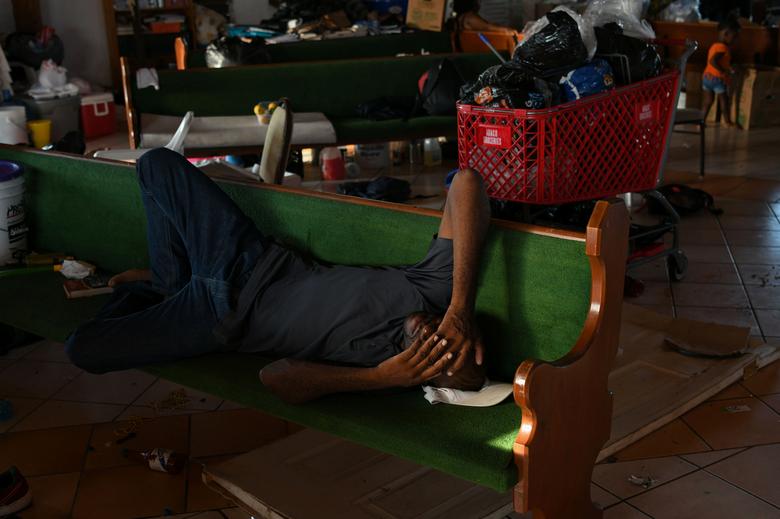NASSAU, (Reuters) – Piles of debris, decaying human and animal corpses and fetid water on storm-hammered Great Abaco Island in the Bahamas are posing a new risk for those who survived Hurricane Dorian’s wrath: Disease.
As the insect population temporarily cleared when Dorian slammed into the islands on Sept. 1 with top sustained winds of 185 miles (298 km) per hour, water-borne and insect-borne diseases, including malaria and dengue fever, are fresh threats for those who remain or return to the island, the Pan American Health Organization (PAHO) said in a report this week.
Disease outbreaks could further drive up the death toll of one of the most powerful Atlantic hurricanes on record, which currently stands at 50, but which Bahamian Prime Minister Hubert Minnis said he expects to significantly increase.
Some 1,300 people have been registered as missing in the storm’s wake and the Bahamian Ministry of Health has requested 500 body bags, according to the PAHO.
Former Prime Minister Hubert Ingraham believed hundreds of people were dead on Abaco, the local Nassau Guardian newspaper reported on Thursday, citing an interview with Ingraham after he toured that island.
The health risks could be compounded on Abaco, where officials plan to erect two tent city relief centers to house about 4,000 people near Marsh Harbour, John Michael-Clark, co-chairman of the Bahamas’ disaster relief and reconstruction committee, told reporters this week. That figure matches the number of people PAHO estimates remained on Abaco after the storm.
Many who evacuated Abaco to Nassau told Reuters this week they ultimately plan to return to the island to rebuild their homes and lives.
In addition to the vast of destruction on Abaco, some hospitals and health clinics across the islands are only partially operational after sustaining severe storm damage, and face a shortage of personnel and medical supplies.
“Getting the infrastructure back up and running is really key in safety planning,” said Dr. Elizabeth Greig, a physician and disaster response expert with the University of Miami Miller School of Medicine.
“Having safe sources of potable water and effective sanitation is key to keeping populations healthy in temporary housing conditions, along with making sure those shelters are structurally safe and not overcrowded, which can lead to the passing around of respiratory and gastrointestinal viruses.”
Still, efforts to recover and keep disease at bay may be sabotaged by further weather events.
The Caribbean basin remains in the midst of hurricane season with heavy weather over the islands on Thursday, and the U.S. National Hurricane Center was monitoring a system that has a 70% chance of becoming a tropical storm.
The World Health Organization earlier this week said the establishment of early warning systems would be critical to staving off sickness. It emphasized the need for short-term healthcare, water and sanitation improvement, disease monitoring, and widespread collection of health statistics on the most affected islands for at least the next six months.
The Bahamian Ministry of Health has requested extra supplies of Diphtheria and Hepatitis A vaccines for health care providers working in storm-hit areas, the PAHO said.
Around Marsh Harbour, where officials estimate that 90% of the homes and buildings were damaged or destroyed, survivors remained worried.
“Every day, they’re picking up bodies, who knows how many died?” said Izlaine Jean, 39, a housekeeper and private chef. “We don’t know if it’s safe to live here … we know we can’t drink the water, so how can we survive?”





